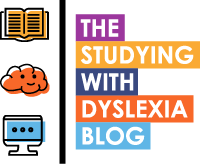In this article I am excited to share a guest article from dyslexia tutor Rosemary Dickson, a long term friend of the Studying With Dyslexia Blog. In this article, Rosemary shares an strategy that helps with writing for KS3 students.
The Hand Strategy For Improving Writing Skills For KS3 Students.
Why use the HAND Strategy?
Do you find writing difficult? Are you unsure how to write more effectively? Although you have been taught writing skills, you may find it hard to remember all the details.
The HAND Strategy is easy to remember because you write with your hand – and it is always there!
You always have your ‘hand’ with you!
You take your ‘hand’ into tests and exams!
How does the HAND Strategy help?
A ‘hand’ can be a key to better writing because it reminds us of several techniques we can use. These techniques can help make our writing more interesting and help us achieve targets, such as intentional devices used for effect; variety of sentence structures; range of vocabulary.
Memory strategies work because they include easy, intuitive reminders. The fingers and thumb, plus the palm, give us the keys to better writing. Helpfully, each digit represents its own technique. Thus the thumb represents ‘Strong Words’ – i.e. effective vocabulary. We can remember this because we have all played ‘Thumb Wars’ and to win Thumb Wars you need a strong thumb! If you are a kinaesthetic learner, you can play a few rounds of Thumb Wars to remind yourself of ‘Strong Words’.
The pointy finger.
Our ‘Facts’ finger is the ‘pointy’ finger, the one we use to give orders – to tell people what they should do, or to emphasise particular points we are making. This can remind you to include some factual information in your writing and is particularly useful for non-fiction persuasive and informative writing.
Each finger has three clearly defined sections, most easily seen on the longest finger, so this finger reminds us to use the ‘rule of three’ or ‘lists’.
The ‘ring’ finger is less obvious, but I refer to it as ‘yet another finger’, which reminds us of ‘repetition’. Repetition is a very useful intentional technique which is effective in many types of writing including persuasive, descriptive and informative.
Our shortest finger can clearly remind us to use some very short sentences, which can help create drama and build tension.
Finally, you can finger-trace a large question mark on your palm. Shut your eyes and ‘feel’ the light touch as you trace the question mark.
Practicing the HAND Strategy
· Draw round your own hand, or sketch a hand
Draw around your own hand.
· You may like to colour-code each finger
· Annotate with the appropriate technique
· Add an example of each technique
· Draw and annotate from memory
· Teach someone else – friend or family
Practice by choosing a topic and write six sentences using the HAND Strategy. Your techniques can be in any order you like.
Lions:
Have you ever seen a lion in action? A lion in action combines power and speed. Normally lions hunt every two to three days. We were fortunate to see the young stately lion observe an approaching gazelle. He watched silently, crept forward stealthily and leapt into action. A swift attack! Darting, pouncing!
Can you identify all the HAND techniques used in the Lion story?
Benefits
Of course, like all strategies, the HAND Strategy is a reminder, a guide, a prompt. You wouldn’t stick to it rigidly, but use it as a flexible friendly reminder. Its purpose is not a formula, but rather a guide.
In each paragraph we could be intentional at including two or three HAND techniques. The HAND Strategy can help you think, ‘What else can I write? How can I make it more interesting? I could ask a question; I could add a list. Maybe a short sentence would add suspense.’
The HAND Strategy is a step towards using an increasing variety of sentence structures, which in turn makes writing more engaging, interesting and exciting. Imagine a concert with five or six different instruments, compared to a concert with just one instrument. Or a painting with several colours working together, rather than all one colour. It is similar with writing. For some people, writing skills come naturally, but for those who are reluctant or unsure, an easy to remember strategy can make all the difference.
In my experience, students recognise the difference in their writing; they know it is better and are impressed that they achieved this! The block to writing tends to diminish as the student thinks in a more structured way. The HAND Strategy acts as a guide, helping us understand how writers ‘do it’ and builds confidence in our own ability - even finding that writing can be fun!
Rosemary Dickson
SpLD Tutor, PATOSS TPC
For over twenty years I have been following my passion to support dyslexic students, see them gain confidence and begin to flourish.
Want to support the work of John Hicks and The Studying With Dyslexia Blog and gain exclusive access to content that informs and inspires the supporters of dyslexic learners?
Join our community of patrons who support the Studying With Dyslexia Blog on a monthly basis in return for specific perks that further helps to inform and inspire, you, the supporter of a dyslexic learner.
Click the button below to become a patron.






